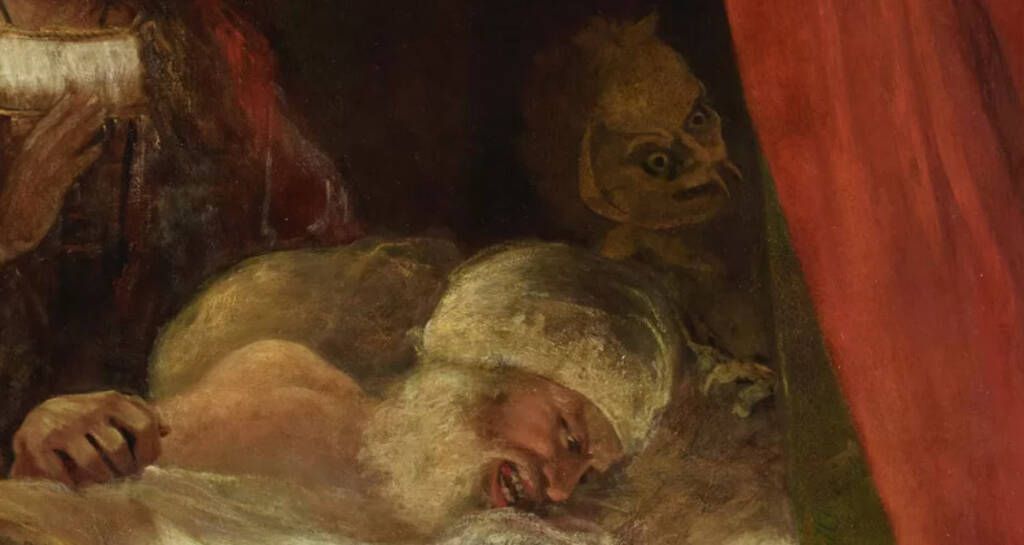
Restoration of works of art has long been a scrupulous process aimed at preserving and reviving the beauty of masterpieces of the past. However, from time to time restoration helps to reveal the secrets of the past. This seemingly supernatural phenomenon is associated with the restoration of Joshua Reynolds' famous painting The Death of Cardinal Beaufort.
During the removal of the last layers, a mysterious and eerie figure "appeared" in the background of the painting - an image that bore a striking resemblance to a demonic entity. The figure, hidden for centuries under accumulated layers, turned out to be a ghostly creature with disturbing features. The sudden appearance of this mysterious demon added a whole new dimension to the story depicted in the picture.

Photo source: nationaltrust.org.uk
Art critics and scholars are now grappling with the question of whether this demonic figure is an intentional element of Reynolds' artistic vision, or whether it represents otherworldly intervention. Some argue that Reynolds may have included symbolic elements to convey a deeper, allegorical message, perhaps related to the cardinal's inner struggle or a larger historical context.
On the other hand, skeptics believe that the appearance of the demonic figure may be an accidental result of the restoration process, explaining it by layers of dirt and varnish that obscure the original composition. They argue that the human mind tends to recognize patterns and shapes, especially when faced with abstract or partially obscured images.

Photo source: nationaltrust.org.uk
Some perceive the otherworldly presence as a hidden addition to the picture, adding an element of mystery and intrigue. However, others express concern, associating the figure with supernatural phenomena.

Photo source: nationaltrust.org.uk
The 1789 artwork is on display again at Petworth House in West Sussex, where the demon can be seen in full. The fanged creature is at the head of the bed, in the shadows, as Cardinal Beaufort lies dying, with King Henry VI and two lords at his bedside. The work was written as illustrations for a scene from Shakespeare's play.
Source: bbc.com
